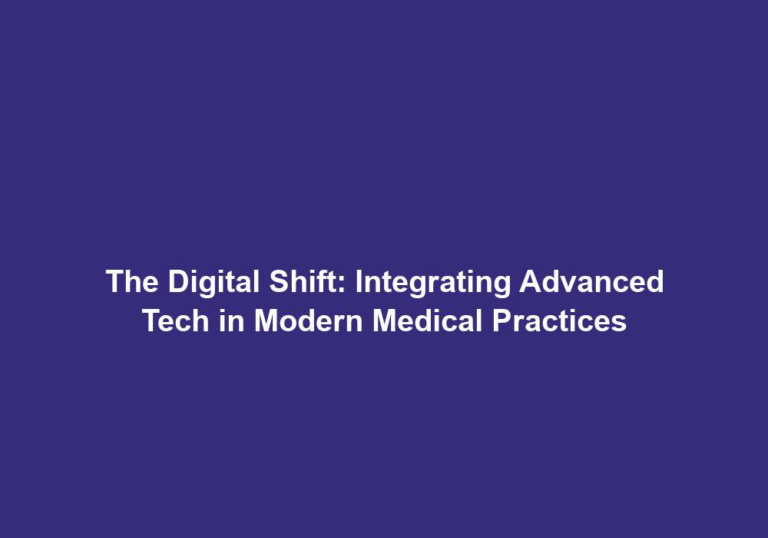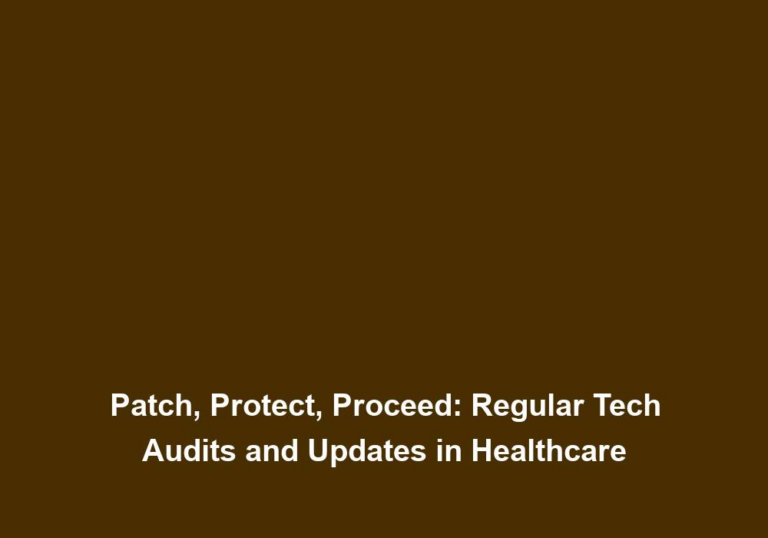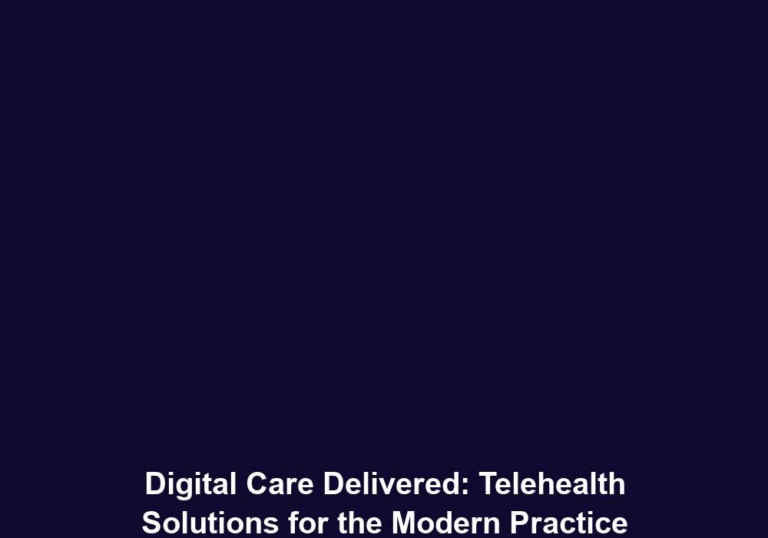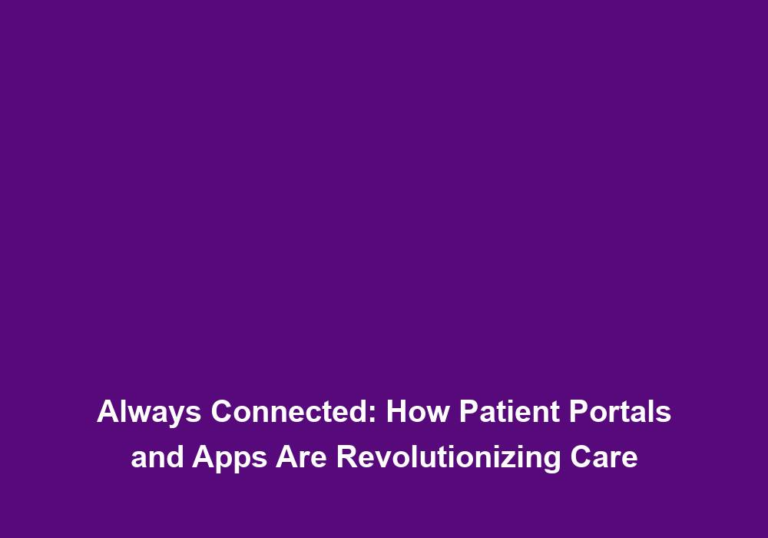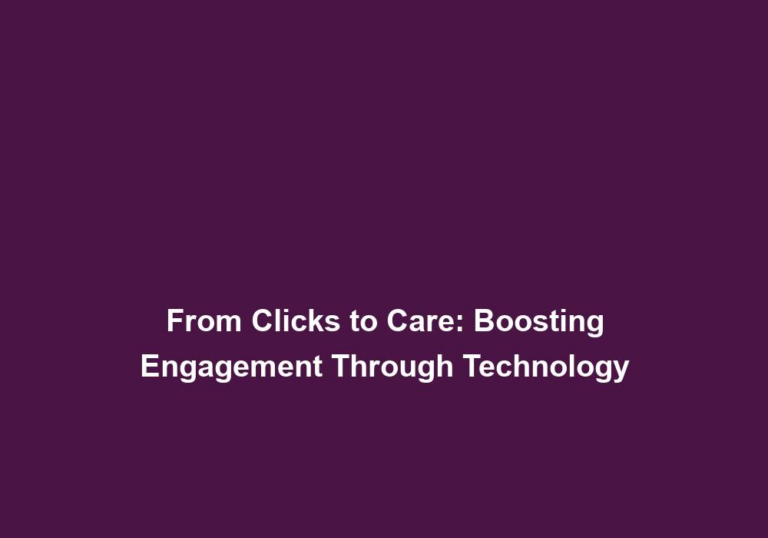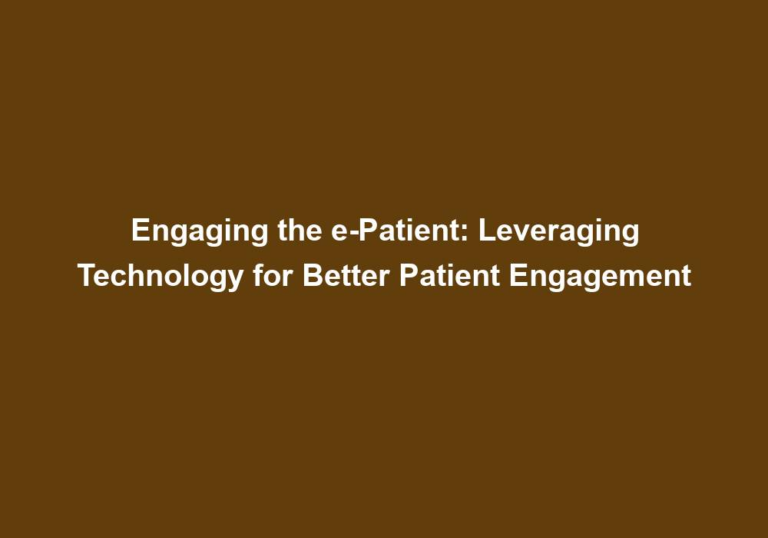Safe & Secure: Elevating Cybersecurity in Digital Health Practices
In today’s digital age, cybersecurity has become a critical concern, especially in the field of healthcare. With the rapid advancement of technology and the increasing reliance on digital platforms, it is crucial for healthcare professionals to prioritize the protection of sensitive patient information and maintain the integrity of their digital health practices. This article will delve into the various measures and best practices necessary to elevate cybersecurity in digital health practices.
Why Cybersecurity Matters in Digital Health
Digital health practices encompass a wide range of activities, including electronic health records (EHR), telemedicine, mobile health applications, and interconnected medical devices. These technologies have undoubtedly revolutionized the healthcare industry, allowing for improved patient care, remote consultations, and efficient data management. However, with these advancements come potential vulnerabilities that can be exploited by cybercriminals.
The consequences of a cybersecurity breach in healthcare can be devastating. Patient data, including personal information, medical history, and even financial details, can be compromised. This not only puts patients at risk of identity theft and fraud but can also lead to reputational damage for healthcare providers. Furthermore, cyberattacks can disrupt critical healthcare services, potentially endangering patient lives.
Understanding the Threat Landscape
Before delving into cybersecurity best practices, it is essential to understand the common threats that healthcare organizations face. By identifying these threats, healthcare professionals can develop a proactive approach to cybersecurity. Some of the most prevalent threats in digital health practices include:
-
Malware and Ransomware: Malicious software can infiltrate systems and cause significant damage, including unauthorized access to patient data and holding systems hostage for ransom. Healthcare organizations must implement robust antivirus and anti-malware solutions to detect and prevent such attacks. Regular system scans and updates are necessary to stay protected against the latest malware and ransomware threats.
-
Phishing Attacks: Cybercriminals often use deceptive emails, messages, or websites to trick healthcare employees into revealing sensitive information or gaining unauthorized access. Healthcare organizations should educate their staff about the dangers of phishing attacks and provide regular training on how to identify and report suspicious emails or messages. Implementing email filters and spam protection measures can also help mitigate the risk of falling victim to phishing attempts.
-
Insider Threats: Employees with malicious intent or accidental mistakes can compromise cybersecurity. Adequate security protocols and training are necessary to mitigate insider threats. Healthcare organizations should enforce strict access controls, conduct background checks on employees, and implement monitoring systems to detect any suspicious activities. Regular cybersecurity training and awareness programs should be conducted to educate employees about the importance of data protection and the potential consequences of insider threats.
-
IoT Vulnerabilities: The increasing use of interconnected medical devices poses unique cybersecurity challenges. Weak security protocols in IoT devices can provide pathways for cyberattacks. Healthcare organizations should ensure that all IoT devices are properly secured by implementing strong authentication mechanisms, regularly updating firmware and software, and segregating IoT networks from other critical systems. Conducting vulnerability assessments and penetration testing on IoT devices can help identify and address potential vulnerabilities.
-
Data Breaches: Cybercriminals may target healthcare organizations specifically to obtain patient data, which can then be sold on the black market or used for various criminal activities. Healthcare organizations must implement robust data protection measures, such as data encryption, access controls, and network segmentation, to prevent unauthorized access to patient data. Regular data backups and secure offsite storage should be in place to ensure data recovery in the event of a breach.
Best Practices for Elevating Cybersecurity
1. Implement a Comprehensive Security Framework
Healthcare organizations must adopt a robust security framework that aligns with industry best practices, such as the National Institute of Standards and Technology (NIST) Cybersecurity Framework. This framework provides a structured approach to managing and reducing cybersecurity risks. It includes guidelines on identifying and protecting critical assets, detecting and responding to cyber threats, and recovering from cybersecurity incidents. By implementing a comprehensive security framework, healthcare organizations can establish a strong foundation for their cybersecurity practices.
2. Conduct Regular Risk Assessments
Regular risk assessments help identify vulnerabilities within digital health practices. By conducting comprehensive assessments, healthcare organizations can proactively address potential security gaps and implement appropriate controls. Risk assessments should involve evaluating the security of systems, networks, applications, and processes. This includes identifying potential threats, assessing the likelihood and impact of those threats, and prioritizing mitigation measures. Regularly reviewing and updating risk assessments ensures that cybersecurity measures remain effective as technology and threats evolve.
3. Train Employees on Cybersecurity Awareness
Employee education and awareness play a crucial role in elevating cybersecurity. Healthcare organizations should provide comprehensive training programs that cover topics such as identifying phishing attempts, creating strong passwords, and reporting suspicious activities. Training should be tailored to different job roles and responsibilities within the organization. It should emphasize the importance of data protection, the potential consequences of cybersecurity breaches, and the role of each employee in maintaining a secure environment. Regular refresher training sessions and awareness campaigns can help reinforce good cybersecurity practices.
4. Encrypt Sensitive Data
Encrypting sensitive patient data ensures that even if unauthorized access occurs, the information remains unreadable and unusable by cybercriminals. Healthcare organizations should implement strong encryption protocols, both in transit and at rest. Encryption should be applied to all sensitive data, including patient records, payment information, and personal identifiable information (PII). Encryption keys should be securely managed and regularly rotated to maintain the integrity of the encryption process. Additionally, healthcare organizations should consider implementing data loss prevention (DLP) solutions to monitor and prevent unauthorized data disclosure.
5. Regularly Update and Patch Systems
Outdated software and systems are more vulnerable to cyberattacks. Healthcare organizations should establish a systematic process for timely patching and updating of all software and systems used within their digital health practices. This includes operating systems, applications, firewalls, antivirus software, and any other components of the IT infrastructure. Regularly applying security patches and updates helps address known vulnerabilities and strengthens the overall security posture. Automated patch management tools can streamline the patching process and ensure that critical updates are not overlooked.
6. Implement Access Controls
Strict access controls ensure that only authorized personnel can access sensitive patient data. Healthcare organizations should implement two-factor authentication, role-based access controls, and regular access reviews to prevent unauthorized access. Two-factor authentication adds an extra layer of security by requiring users to provide two different forms of identification, such as a password and a fingerprint or a smart card. Role-based access controls limit user privileges based on their job responsibilities, ensuring that each user has the appropriate level of access to perform their tasks. Regular access reviews help identify and revoke unnecessary or outdated access privileges.
7. Employ Intrusion Detection and Prevention Systems
Intrusion detection and prevention systems (IDPS) are essential for monitoring network traffic and detecting potential cyber threats. Healthcare organizations should deploy IDPS solutions to quickly identify and respond to any suspicious activity. IDPS can detect known attack patterns, anomalous behavior, and unauthorized access attempts. It can also generate alerts and trigger automated responses to mitigate threats in real-time. Regularly updating and fine-tuning IDPS rules and configurations ensures that the system remains effective against new and emerging threats.
8. Backup and Disaster Recovery Plans
Regularly backing up data and having a robust disaster recovery plan in place is crucial. In the event of a cyberattack or system failure, healthcare organizations can restore critical systems and data quickly, minimizing downtime and potential losses. Backup strategies should involve regular backups of all essential data, including EHRs, databases, and configuration files. Multiple copies of backups should be stored securely, both on-site and off-site, to ensure data availability and resilience. Disaster recovery plans should outline the steps to be taken in the event of a breach or system failure, including incident response, system restoration, and communication protocols.
9. Regularly Audit and Monitor Systems
Regular audits and system monitoring are essential for identifying any anomalies or potential security breaches. Healthcare organizations should establish a continuous monitoring system that tracks and analyzes all network activities. This includes monitoring user access logs, network traffic, system logs, and security events. Regular vulnerability scans and penetration testing should be conducted to identify and address weaknesses in the infrastructure. Security information and event management (SIEM) solutions can centralize and automate the monitoring process, enabling timely detection and response to security incidents.
10. Engage Ethical Hackers for Penetration Testing
Conducting regular penetration testing by engaging ethical hackers helps identify potential vulnerabilities that could be exploited by cybercriminals. Ethical hackers can simulate real-world cyberattacks to test the effectiveness of existing security measures. By identifying and exploiting vulnerabilities, ethical hackers provide valuable insights into the strengths and weaknesses of the cybersecurity infrastructure. This allows healthcare organizations to proactively address vulnerabilities and implement appropriate countermeasures. Ethical hacking should be performed by certified professionals who adhere to strict ethical guidelines and provide comprehensive reports with recommendations for remediation.
Conclusion
In the ever-evolving landscape of digital health practices, maintaining robust cybersecurity measures is of utmost importance. By implementing a comprehensive security framework, conducting regular risk assessments, and training employees on cybersecurity awareness, healthcare organizations can significantly mitigate the risks associated with cyber threats. Additionally, encrypting sensitive data, regularly updating and patching systems, and employing intrusion detection and prevention systems further enhance cybersecurity. Backup plans, regular auditing, and engaging ethical hackers for penetration testing contribute to the overall resilience of digital health practices. By adopting these best practices, healthcare professionals can ensure the safe and secure management of patient data, ultimately providing high-quality care in the digital era.
Please note that this article is for informational purposes only and should not be considered as legal or professional advice.


